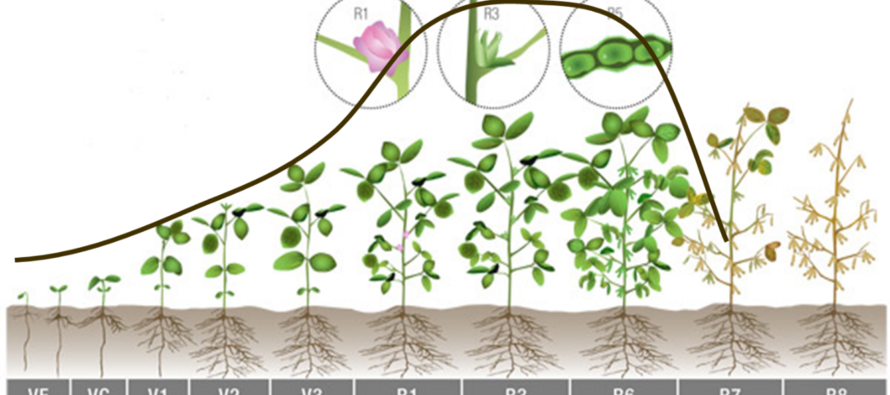Soybean Irrigation Initiation

Related Articles
- 2010 Soybean And Corn Variety Trial Data 3
- 2010 Row Crop Short Course Video Links 0
- March Ag Supply and Demand Report Recap 0
Latest Tweets
Regardless of the amount of rainfall that we have been blessed to receive thus far this growing season, we have reached the point where extreme temperatures and little to no rain in the forecast have led to irrigation being on the top of our to do lists. As a state, we have a portion of the crop where irrigation has already been initiated while other acres are just moving into that stage. The current weather conditions coupled with the current stage of development have led to several questions about irrigation initiation and the impacts of moisture stress at early reproductive growth stages.
The first step in determining when to initiate irrigation in soybean is to properly identify the growth stage of the crop. The commonly recognized soybean reproductive growth stages are as follows:
| R1: | First flower anywhere on plant |
| R2: | Flower in the upper two nodes |
| R3: | 3/16” long pod in upper four nodes |
| R4: | 3/4” long pod in upper four nodes |
| R5: | Beginning seed |
| R6: | Seed completely filling the pod cavity |
| R7: | Mature pod on the main stem of the plant |
| R8: | 95% of pods mature in color |
With respect to moisture needs in soybean, irrigating during the vegetative phase provides little to no yield benefit. The reason to apply irrigation during the vegetative stages is to promote adequate vegetative growth and node development. It is during the reproductive phase of soybean that yield loss due to drought stress is most severe.
Specifically, stress associated with lack of available soil moisture during the pod development (R3-R4) and pod fill (R5-R6) stages of reproduction has the greatest impact on soybean yield. Soybean can use 0.25 inch of water per day during reproductive development. So, stress from lack of moisture between R3 and R4 may result in fewer pods and between R5 and R6 may result in decreased seed size.

The next step is to determine the available soil moisture as the crop moves into these reproductive stages. A recommended method of determining available soil moisture is through the use of soil moisture sensors. Information on calculating average soil moisture can be found through the following:
How to Schedule Irrigation with Watermark Sensors
Remember, evaluation of sensor readings at different depths should reveal the active rooting zone. If over a period of a few days a sensor has little or no movement, remaining in the 0 to 20cb range, most likely the roots have not developed to that depth. On the other hand, if the sensors are progressively moving upward 5-10cb per day, most likely roots are developed and utilizing moisture at that depth.
If the soybean crop is at R2 and the moisture sensors indicate that the soil profile is not fully charged, it is best to initiate irrigation to ensure adequate soil moisture is available as the crop moves into the pod development stages.




Let me tell You a sad story ! There are no comments yet, but You can be first one to comment this article.
Write a comment